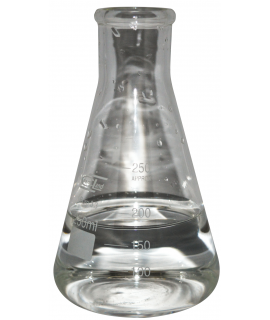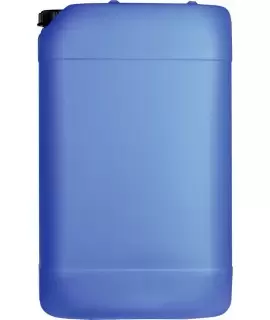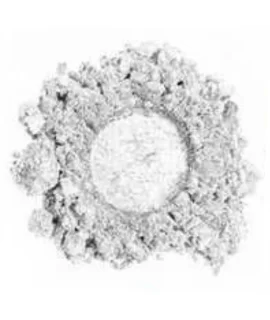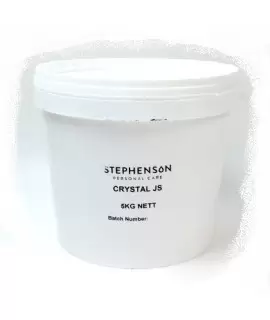DIPROPYLENE GLYCOL (DPG), 99,5%, L
8.93 €
10.50 €
Save 15%DPG, CAS 110-98-5 / 25265-71-8, oxidized propanediol, INCI DIPROPYLENE GLYCOL, dipropylene glycol, 1,1'-Oxybis(1-propanol) and 1,1'-Oxybis(2-propanol)
Parameter | Attribute |
Dipropylene glycol | DPG, oxypropanol, dipropylene glycol, 1,1'-Oxybis(1-propanol) and 1,1'-Oxybis(2-propanol) |
Formula | C6H14O3 |
Structure |     |
IUPAC | 4-Okso-2,6-heptandiol ir 4-Okso-1,6-heptandiol |
INCI | DIPROPYLENE GLYCOL |
CAS | 110-98-5 / 25265-71-8 |
Molar mass | 134,173 g/mol |
Density | 1,02 g/cm3 |
Solubility | In the water: in all proportions |
Dipropylene glycol is a mixture of three isomeric compounds, 4-oxa-2,6-heptanediol, 2-(2-hydroxy-propoxy)-propan-1-ol and 2-(2-hydroxy-1-methyl ethoxy) mixture. It is a colourless, almost odourless liquid with a high boiling point and low toxicity. It is fully miscible with water and also miscible with most organic solvents. This solubility, combined with its low toxicity and low evaporation rate, makes DPG a chemical that is a very useful reactive intermediate in a variety of applications.
In the cosmetics industry, dipropylene glycol is commonly found in a wide range of cosmetic products: sunscreens, hair dyes, antiperspirants, hair conditioners and a variety of skin care products. In the fragrance class, dipropylene glycol is used in perfumes because of its ability to bind to the odour molecules and to diffuse more slowly, where it binds and carries the fragrance elements of the perfume being used. The strength of the fragrance can be adjusted by increasing or decreasing the concentration of dipropylene glycol in the formula. Its low toxicity and good solvent properties make it an ideal additive to perfumes and skin and hair care products. INCI Key Functions:
- Masking: reduces or suppresses the odour or main flavour of the product
- Solvent: dissolves other substances
- Viscosity control: increases or decreases the viscosity of cosmetics
- Perfume: Used for perfumes and aromatic raw materials
In the plastics industry, dipropylene glycol is used as a component in the large-scale production of a plasticiser and in fact 38 % of DPG is used in this process. It is also an initiator for urethane polyols and a reactant for unsaturated polyurethane resins where it provides flexibility and hydrolytic stability. Dipropylene glycol is often used as an intermediate in industrial chemical reactions, as a polymerisation initiator or as a monomer.
In the paint industry, oxypropanol is used as a solvent for printing inks, nitrocellulose, cellulose acetate, varnishes and coatings.
In metalworking, DPG is used to produce metal cutting oils or silicone-based compounds, hydraulic fluids, brake fluid due to its non-toxicity and high boiling point.
In agriculture, DPG is used as a solvent for active substances such as insecticides. Its ability to dissolve organic compounds, and thus its surface wetting properties, make it ideal for spreading active substances on leaves and for facilitating use by dilution with water and spraying on plants.
In de-icing products, dipropylene glycol is used in aircraft de-icing fluid. It is well suited as a component for reducing the ice formation temperature, slow evaporation and easy washability from surfaces, and very low corrosivity. DPG can also be used as a component for the production of high boiling point antifreeze, which would be environmentally friendly.
In the cleaning industry, DPG is used as an ingredient in detergents intended to perform a degreasing function. In addition to its solvent function, DPG also acts as a non-ionic surfactant. Dipropylene glycol also plays an important role in the refining industry, where it is used as an extraction solvent for the extraction of aromatics.
Important: Add the item to your basket, fill in the recipient's details and confirm your order. Thank you!
To save your precious time, we will deliver your order to your address at a time convenient for You!
*- The pictures of the goods may not correspond to the actual appearance, colour, assembly or shape of the goods and their packaging. The information in the product description is of a general nature and may not correspond to the information on the packaging of the product and may not be the exact use of the product. The information given on the stocks and prices of goods may, in certain cases, differ from the actual prices and stocks of goods
Signal word: not applicable |
Hazard icons: not applicable |
Danger phrases: not applicable |
Precautionary statements: not applicable |
Related products
(8 other products in the same category)










